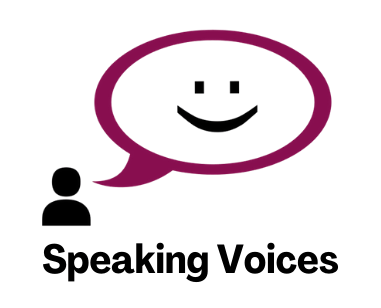Every confident speaker knows that success begins before the first word is spoken. Warming up your voice and body is just as essential as preparing your content. Whether you are about to deliver a keynote, chair a meeting, or speak in a virtual setting, a good warm-up routine helps you sound clear, feel relaxed, and project confidence. In this blog, you will discover why warming up matters, the science behind it, and simple routines you can use to prepare for any speaking opportunity.
Why Warming Up Matters for Public Speaking
Here at Speaking Voices, we believe in the Body, Mind and Voice framework. Communication and speaking isn’t about what you say, that’s the last thing we focus on. We focus on realigning your body and mind so you can speak freely and authentically. Many people overlook the importance of warming up before speaking. However, just as athletes stretch before a race, speakers need to prepare their voices and bodies. A proper warm-up routine does more than prevent strain. It helps you focus, reduces nerves, and lets you step into the spotlight with energy and assurance.
Warming up increases blood flow to your vocal folds and muscles, making it easier to produce sound. It also helps you release physical tension, which can creep in when you are nervous or excited. Most importantly, warming up gives you a moment to centre yourself, breathe deeply, and get into the right mindset for confident communication.
The Science Behind Voice and Body Warm-Ups
Your voice is produced by a complex system of muscles, breath, and resonance. When you are tense or cold, your vocal folds do not vibrate as freely, and your sound can become tight or weak. Warming up physically loosens these muscles and prepares your breath support system, leading to a fuller, more resonant sound.
Research shows that even a few minutes of vocal and physical warm-ups can improve clarity, projection, and stamina. These benefits are especially important for public speakers, teachers, or anyone who needs to use their voice for extended periods. A good warm-up also helps you manage anxiety, as it encourages slow, steady breathing and mindful focus.
Simple Physical Warm-Up Routines
Relaxing the body is the most important part. If you feel relaxed you will start feeling comfortable in your surroundings, when you feel comfortable you are able to talk to anyone. Start by releasing tension in your body. Roll your shoulders forward and back, then gently stretch your neck from side to side. Shake out your arms and hands to let go of any stiffness. Stand tall with your feet hip-width apart, and take a few deep breaths, feeling your ribcage expand and contract.
Next, focus on your face and jaw. Open your mouth wide, then scrunch your face up tight and release. Massage your cheeks, jaw, and temples with your fingertips. These movements help relax the muscles that shape your speech and reduce the risk of mumbling or tightness.
Breathing Techniques for Calm and Control
Breath is the foundation of confident speaking. When you are nervous, your breath can become shallow and fast, making your voice sound weak or shaky. Practise slow, deep breathing to calm your nerves and support your voice.
Try this simple exercise. Place one hand on your stomach and the other on your chest. Breathe in slowly through your nose, feeling your lower hand rise as your belly expands. Exhale gently through your mouth, letting your belly fall. Repeat this several times, focusing on slow, even breaths.
You can also practise counted breathing. Inhale for four counts, hold for four, exhale for four, and pause for four. This technique is especially helpful before high-pressure speaking situations.
If you have time, add a gentle body shake or a few stretches for your back and legs. The goal is to feel loose, energised, and ready to move. I have a 20 minute body relaxation video that you can watch.
Essential Vocal Warm-Up Exercises
Once your body is relaxed, move on to your voice. I’ve created a video you can watch here.
Begin with gentle humming, letting the sound vibrate through your lips and nose. This wakes up your vocal folds and brings awareness to your breath. Move up and down in pitch, as if you are sighing or singing a gentle scale.
Next, try lip trills. Blow air through your lips so they vibrate, creating a buzzing sound. This exercise encourages steady breath support and helps release tension in your lips and jaw.
Practise tongue twisters at a slow pace, focusing on clear articulation. For example, try “red lorry, yellow lorry” or “unique New York.” Gradually increase your speed as you feel more comfortable.
Finally, practise projecting your voice. Stand tall, take a deep breath, and say a simple sentence, such as “I am ready to speak with confidence.” Focus on sending your voice to the back of the room, even if you are on a video call. This builds vocal power and helps you feel in control.
It is common to underestimate how much difference a warm-up makes to your speaking voice. When you start speaking without any preparation, your vocal cords and the muscles that support your voice are often stiff or uncoordinated. This can result in a voice that sounds flat, tight, or even a little shaky, especially first thing in the morning or after long periods of silence.
You might notice that it takes several minutes of talking before your voice feels comfortable, flexible, and expressive. In contrast, when you take just five to ten minutes to warm up your voice and body, you prepare your vocal system for efficient, healthy use right from the start. Warmed-up voices are clearer, more resonant, and less prone to strain or fatigue. You will find you can project with ease, vary your tone, and express yourself fully from your very first sentence. This not only improves your confidence but also helps you make a strong impression on your listeners straight away.
Creating a Personal Warm-Up Routine
Every speaker is different, so experiment to find the warm-up routine that works best for you. Some people need more physical movement, while others benefit from longer vocal exercises. The key is consistency. Aim to spend five to ten minutes warming up before every speaking event, whether it is a presentation, meeting, or interview.
If you are short on time, even a quick sequence of shoulder rolls, humming, and deep breaths can make a big difference. The more you practise your routine, the more natural and effective it will become.
Bringing Warm-Up Benefits Into Your Speaking
A well-warmed voice is clearer, more expressive, and less likely to tire or strain. You will notice yourself speaking with greater energy, confidence, and flexibility. Physical warm-ups help you appear more relaxed and approachable, making it easier to connect with your audience.
Perhaps most importantly, warming up gives you a moment to focus your mind. It is a chance to let go of distractions, visualise success, and step into your role as a confident communicator.
Ready to Speak With Confidence?
Warming up like a pro is one of the simplest and most effective ways to prepare for any speaking opportunity. By taking a few minutes to relax your body, energise your voice, and centre your mind, you set yourself up for clear, confident, and impactful communication.
If you want more guidance or personalised tips for your warm-up routine, support is available. Book a discovery call and start building your confidence from the very first word.
Book your call now and step into the spotlight with energy and assurance.

